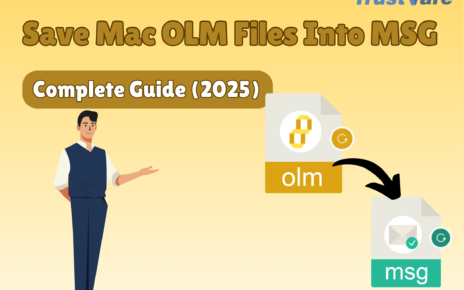As Shopify continues to lead the global eCommerce ecosystem in 2025, the importance of high-quality, maintainable code has never been more critical. Whether you’re working on custom themes, apps, or third-party integrations, a well-executed code review process ensures performance, security, and scalability.
For developers and teams associated with any Shopify development company in USA, adhering to a structured code review checklist improves collaboration, reduces bugs, and ultimately leads to more stable deployments. This guide outlines the essential components of a Shopify code review in 2025, aligning with current best practices and platform updates.
1. Code Consistency and Formatting
Maintaining a consistent code structure across a project helps teams collaborate more efficiently and reduces onboarding time for new developers. Standard formatting should be enforced through linters and Prettier configurations.
- Use consistent indentation (typically 2 spaces).
- Maintain naming conventions for variables and functions.
- Avoid inline styling within Liquid templates.
- Break down large functions or blocks into smaller, reusable parts.
A Shopify web development company in USA typically implements automated linting tools and pre-commit hooks to ensure formatting standards are upheld throughout the codebase.
2. Liquid Template Optimization
Liquid, Shopify’s templating language, must be written efficiently to avoid bloated HTML, slow rendering, and unnecessary logic in the frontend.
- Minimize nested loops and filters.
- Avoid complex conditionals in templates.
- Use includes and sections properly to separate logic.
- Cache collections and product loops where applicable.
During Shopify Theme Customization, bloated templates can slow down the site dramatically. Proper code review ensures themes remain modular, readable, and fast.
3. Asset Management and Optimization
Modern Shopify themes heavily rely on CSS, JavaScript, and image assets. Poor asset management results in longer load times and poor user experience.
- Minify and compress CSS and JS files.
- Use Shopify’s native asset_url and img_url filters correctly.
- Defer or lazy-load scripts that are non-critical.
- Serve appropriately sized images based on screen resolution.
Shopify Speed Optimization is a critical factor in conversion rate. A proper review of assets ensures that the storefront performs well across all devices.
4. Accessibility and Semantic HTML
Accessibility is not just a good practice—it’s a requirement for many eCommerce businesses in 2025. The review should check for:
- Use of semantic HTML5 elements (<header>, <main>, <footer>)
- Meaningful alt attributes for images
- Proper heading structure (H1, H2, H3…)
- Keyboard navigation compatibility
- ARIA attributes where necessary
Many teams now integrate accessibility checks directly into the CI/CD pipeline, especially within a Shopify ecommerce development company USA where ADA compliance may be mandatory for clients.
5. Performance and Page Speed
Page speed directly impacts SEO, bounce rate, and conversions. Code reviewers must verify that:
- Lazy loading is implemented for media
- Unused CSS and JS are removed
- Third-party scripts are minimized
- Core Web Vitals benchmarks are met
Partnering with the best Shopify development company in USA can provide technical audits that go beyond code review to identify performance bottlenecks that affect business outcomes.
6. Responsiveness and Cross-Browser Compatibility
All themes must function perfectly on desktops, tablets, and smartphones, across different browsers. The review checklist should confirm:
- CSS media queries are used correctly
- No elements overflow or break on smaller screens
- Buttons, navigation, and popups work seamlessly on touch devices
- Compatibility with major browsers including Chrome, Firefox, Safari, and Edge
These checks are often automated in a Shopify Plus Agency workflow, which supports larger enterprises requiring detailed QA processes.
7. Clean and Reusable Components
One of the benefits of Shopify’s section-based architecture is the reusability of code. Reviewers should ensure:
- Repeated code is abstracted into snippets or sections
- Sections are configurable through schema settings
- Blocks are used effectively for modular design
- No hardcoded values or inline JavaScript
This approach not only makes themes easier to maintain but is also best practice for any Shopify web development company in USA managing multiple client stores.
8. Secure Coding Practices
Security should be baked into the development process from the start. During code reviews, ensure:
- No sensitive data (like API keys) is exposed in the front end
- Input fields are properly validated
- Webhooks and external APIs are authenticated securely
- Checkout-related code follows Shopify’s best practices
A responsible Shopify development company in USA will always prioritize secure development and verify it during every pull request.
9. App Integration and API Usage
When building custom Shopify apps or integrating third-party services, reviewers must check:
- API calls are optimized and not redundant
- Rate limits are respected
- Asynchronous data fetching is handled gracefully
- Error handling is implemented effectively
This is particularly important when working with enterprise clients through a Shopify Plus Agency, where system integration is often complex.
10. Upgrade and Migration Readiness
In cases where a theme or app is being upgraded or migrated, reviewers should verify:
- Legacy code is removed or deprecated properly
- Data mapping is handled correctly
- Migration scripts (if applicable) are tested thoroughly
- The codebase adheres to Shopify’s latest platform changes
Teams offering Shopify Migration Services must pay close attention to compatibility issues that arise during platform or theme upgrades.
11. Custom Development Quality
Whether working on a PSD to Shopify conversion or custom features, the review must check:
- Pixel-perfect implementation from design files
- Responsiveness and interactivity match design intent
- Code is DRY (Don’t Repeat Yourself) and modular
- Revisions are tracked and changes documented properly
Custom projects handled by a Shopify ecommerce development company USA demand an extra layer of review to ensure high fidelity and maintainability.
For a Deeper Dive: Shopify Development in 2025
To explore how top agencies implement these practices, visit this blog post. It outlines the strategies used by leaders in the Shopify ecosystem to maintain code quality, speed, and compliance in 2025.
Conclusion
A thorough and standardized code review process is essential for delivering high-quality Shopify projects. From performance optimization to secure, scalable architecture, each checklist item plays a critical role in the development lifecycle.
For businesses looking to ensure their Shopify stores meet modern standards, partnering with an expert Shopify development company in USA is a smart investment. Viha Digital Commerce stands out as a best Shopify development company in USA, offering a full range of services including Shopify Theme Customization, Shopify Migration Services, Shopify Speed Optimization, and even PSD to Shopify conversions.
As a trusted Shopify ecommerce development company USA and Shopify Plus Agency, Viha Digital Commerce empowers brands to launch faster, scale smarter, and maintain their competitive edge in 2025.




